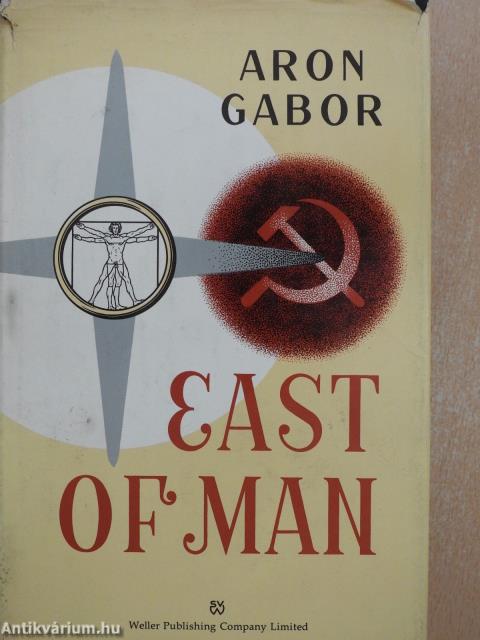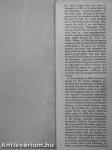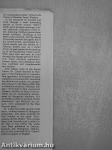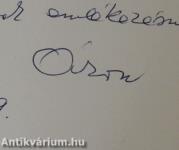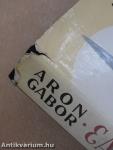1.117.303
kiadvánnyal nyújtjuk Magyarország legnagyobb antikvár könyv-kínálatát
East of Man (dedikált példány)
| Kiadó: | Weller Publishing Company Ltd. |
|---|---|
| Kiadás helye: | Toronto |
| Kiadás éve: | |
| Kötés típusa: | Ragasztott kemény kötés |
| Oldalszám: | 373 oldal |
| Sorozatcím: | |
| Kötetszám: | |
| Nyelv: | Angol |
| Méret: | 22 cm x 14 cm |
| ISBN: | 0-920004-01-6 |
| Megjegyzés: | Aron Gabor szerző által dedikált példány. |
naponta értesítjük a beérkező friss
kiadványokról
naponta értesítjük a beérkező friss
kiadványokról
Előszó
TovábbFülszöveg
i Dr. Aron Gabor who was born in
Hungary in 1911, is a descendant of ^ the legendary "cannon-founder" of
'i the same name, the hero of the Hun-
^ garian fight for freedom under Lajos
j Kossuth in 1848. Dr. Gabor studied
j law at the Budapest University, then
!1 joined the staff of an anti-Fascist,
i anti-Communist Budapest daily.
i During World War II, he was in the
' front lines as a war correspondent,
i and his reports were published in a
' book called Beyond the Stalin Line
j (1941). When, in 1944, the occupying
j German Army banned all anti-Fascist
I publications, he gave up writing,
' crossed the front, and reported for
' duty with the new, democratic Hun-
garian government that had been formed in East Hungary occupied by I the Russians. Appointed Secretary-
, General of the Hungarian Red Cross,
he organized its Search Service, and collected the names of a quarter of a I million Hungarian soldiers and
; civilians who had fought in the Soviet
] Union.
In... Tovább
Fülszöveg
i Dr. Aron Gabor who was born in
Hungary in 1911, is a descendant of ^ the legendary "cannon-founder" of
'i the same name, the hero of the Hun-
^ garian fight for freedom under Lajos
j Kossuth in 1848. Dr. Gabor studied
j law at the Budapest University, then
!1 joined the staff of an anti-Fascist,
i anti-Communist Budapest daily.
i During World War II, he was in the
' front lines as a war correspondent,
i and his reports were published in a
' book called Beyond the Stalin Line
j (1941). When, in 1944, the occupying
j German Army banned all anti-Fascist
I publications, he gave up writing,
' crossed the front, and reported for
' duty with the new, democratic Hun-
garian government that had been formed in East Hungary occupied by I the Russians. Appointed Secretary-
, General of the Hungarian Red Cross,
he organized its Search Service, and collected the names of a quarter of a I million Hungarian soldiers and
; civilians who had fought in the Soviet
] Union.
In the autumn of 1945, he was arrested by the Soviet military au-h thorities and condemned to death for
' I his book Beyond the Stalin Line. After
i' seventeen months spent in a death
i cell in Hungarian territory, the Mos-
cow Special Committee commuted i the verdict to five years forced labour
and permanent exile in Siberia. Dr. j Gabor served his sentence in Western
I Siberia, in the South-Kusbas camp
' area. He worked as a wood-cutter,
' tractor driver, and medic. Released
J from camp in 1950 and declared a
« Soviet citizen, he settled permanently
! in the Borzas workers' settlement,
Kemerovo District, Central Siberia. ' j He was granted the same rights en-
; joyed by Soviet citizens but was for-
\ bidden to leave the sector and was
i denied contact with his relatives in
; Hungary or the Hungarian Embassy
I in Moscow. He started his "new life"
as a navvy, unloading wagons, rising I to a tractor driver and finishing, in
! 1960, as a road-building foreman and
an "outstanding worker" of the Trade Union of Siberian Forest Workers.
In the meantime he married and lived through a most interesting period of Soviet history: Stalin's death, giant prisoner uprisings, various amnesties, liberation of the exiles, releasing of kolhoz peasant from forced residence, shrinking of the MVD camp-network, and the taking of first step towards bourgeois life in the Soviet Union, surrounded by a Soviet family and the society of a Siberian district seat. As a tractor driver, he participated in the opening up of the Kazakhstan Virgin Lands. With open eyes and ears, he lived through that strange period of transition when national aspirations, human needs, and ideological dogmas conflicted and complemented one another.
After fifteen years in the Soviet Union, Dr. Gabor returned to Hungary in the framework of a repatriation agreement. In Budapest he again worked as a journalist but, because of his attitude and outlook, was compelled to escape to the West in 1965. This is where he wrote his "Siberian Trilogy": To the East of Man, Geometrical Freedom, and Men of Many Centuries. These are an outstanding achievement in Hungarian literature. His two books written in German, Wohin Amerikaner? and Wahrheit auf rus-sisch, were acclaimed by the West German press.
Dr. Gabor has made several world tours, visiting centres of Hungarian emigration, and these inspired the first volume in his series "Hungarians and the World." This volume deals with Australia and is called On the Edge of Asia (1974). His works have been published in German, Spanish and Portuguese editions. East of Man is the first of Dr. Gabor's works to appear in English.
Cover design by Imre Mosdossy Vissza
Témakörök
- Idegennyelv > Idegennyelvű könyvek > Angol > Szépirodalom > Regény, novella, elbeszélés
- Szépirodalom > Regény, novella, elbeszélés > Tartalom szerint > Történelmi regények > Hadifogság, lágerek
- Szépirodalom > Regény, novella, elbeszélés > Az író származása szerint > Magyarország
- Szépirodalom > Regény, novella, elbeszélés > Tartalom szerint > Életrajzi regények > Önéletrajzok, naplók, memoárok
- Dedikált, aláírt kiadványok > Idegennyelv > Szerző által > Dedikált kötetek
- Dedikált, aláírt kiadványok > Szépirodalom > Regények, novellák, elbeszélések > Szerző által > Dedikált kötetek
- Idegennyelv > Dedikált, aláírt kötetek > Szerző által > Dedikált kötetek
- Szépirodalom > Dedikált, aláírt kötetek > Szerző által > Dedikált kötetek


